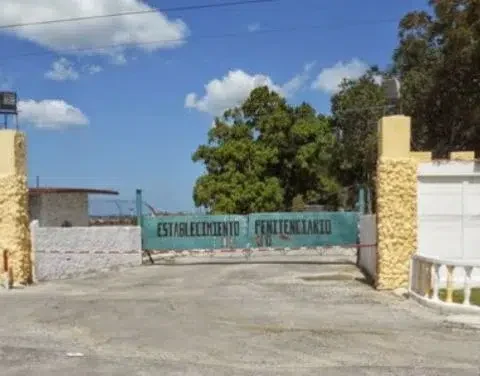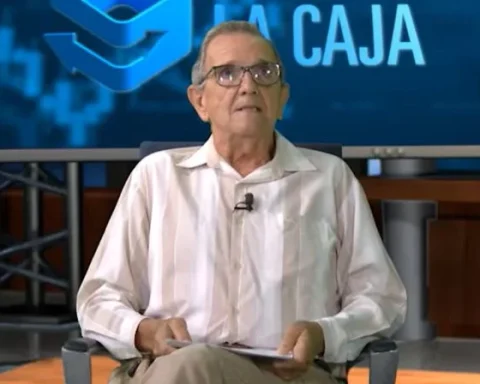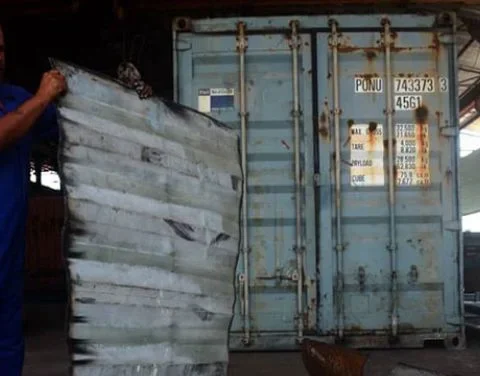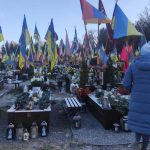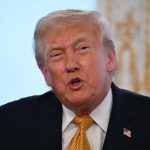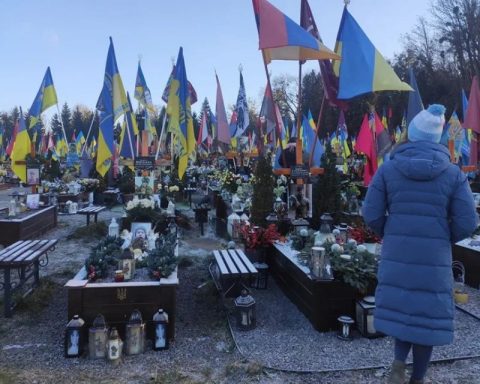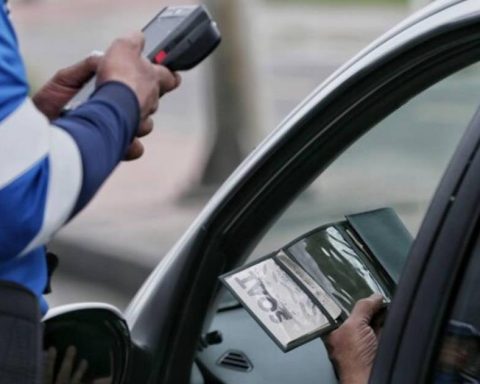HAVANA, Cuba. – The Cuban regime has recruited large numbers of agents in many countries and poses a serious and continuing threat to international security. Meanwhile, universities have been one of Havana’s primary targets, and the United States has been the main target of spies, agents and collaborators of the Cuban Intelligence Directorate (DI).
This is how he demonstrated it a recent report of Cuba Archive (AC), a non-profit organization founded in 2001 to promote human rights through research and publications.
The report’s author and AC director, Maria Werlau, relied on information provided by six former DI officials. Three of them are Enrique García, José Cohen and Orlando Brito, who defected in 1989, 1994 and 2002, respectively. The six wrote an unprecedented open statement coordinated by the AC. The information provided by these defectors helps reveal an estimate of the external reach of Cuba’s intelligence services.
“At least 362 U.S.-based officers manage around 4,657 intelligence relationships, of which 2,506 (60%) would likely be agents providing information clandestinely, and 1,370 (40%) would be ‘trusted’ or ‘useful’ relationships, which are publicly managed by Cuban intelligence officials posing as diplomats, journalists, academics, businessmen and others,” the report details.
In the United States alone there may be more than 500 “illegals,” who are “highly trained Cuban intelligence officers operating under deep and long-term conditions under the cover of assumed identities of other nationalities.”
In Latin America and the Caribbean, the number is around 125 DI officers who would be managing at least 1,625 intelligence relationships.
Cuban spies, agents and collaborators operate in the United States and multiple countries “within their respective governments, media outlets, universities, churches, businesses, unions and others, including at the highest levels and without raising suspicion. Recruitment is achieved through blackmail, cash payments or exclusive deals and privileges, and, in most cases, by exploiting ideological motivations to ‘defend the Revolution’ or radical causes under the pretext of social justice.”
The American academy: fertile ground for recruitment
According to Werlau, infiltration of the American academy has been one of the main objectives of the Cuban intelligence services, for which the DI has had training and resources from the Soviet KGB since 1960.
“It targets university graduates, especially from elite schools, because they eventually rise to positions of power in their respective countries. (…) Among Cuba’s most valuable recruits are young university students who are eventually guided to infiltrate the most sensitive areas of their governments. (…) Recruitment at universities is a major investment in intelligence because idealistic young people are easily manipulated and, once recruited, collaborate for many years and remain committed to the secret relationship even if they mature and realize their error.”
Among those recruited at American universities are: Victor Manuel Rocha and Ana Belen MontesThe first is a former US ambassador with a long diplomatic career; he was arrested on December 1, 2023 and sentenced to 15 years in prison after pleading guilty to serving as an agent of Cuba for three decades. The second was sentenced in 2001 to 25 years in prison for spying for Cuba. Both had access to highly sensitive information when they were spying for the Cuban regime.
Priority universities include Yale, Harvard, MIT, Berkeley, Columbia, Princeton, the University of Pennsylvania, Duke and Stanford, as well as other centers located near Cuba’s diplomatic missions (Hunter College in New York, and Georgetown and American in Washington, DC, for example) and universities in Miami, the main seat of the Cuban exile community.
The National Autonomous University of Mexico (UNAM) and the Institute of International Studies at the University of Chile have also been targets of Cuban intelligence.
According to the report, the Cuban regime often uses its embassies as intelligence centers, which allows the DI to operate under diplomatic cover. For example, teachers and students recruited in California are targeted within the island’s embassy in Mexico.
In Cuba, regime agents also work to recruit visitors to attend conferences and academic exchanges.
The DI also has numerous agents and collaborators from the enormous international network of solidarity with Cuba, consisting of some 1,649 friendship associations in 150 countries, 73 alumni associations in 62 countries, and 109 “Parliamentary Friendship Groups” created on five continents whose objective is to influence foreign policy in favor of the “Cuban Revolution.”
“The fact that Cuban agents have operated at such high levels within academia for decades has multiplied the impact over time, as each recruited agent is tasked with identifying DI individuals with characteristics and viewpoints that make them potential recruits. The issue is so important that in 2014, the FBI issued an alert to the private sector describing the DI’s aggressive work in academia,” Werlau warns.
For the researcher, it is disconcerting that so many people in privileged positions in free countries are willing to betray their governments to prop up a totalitarian dictatorship.
“This is especially disconcerting given that the ‘Cuban Revolution’ has evidently failed in its promise to improve people’s lives. That Western academia offers ID a favorable breeding ground is possibly one of the main reasons,” he noted.
A Cuban spy
One of the former intelligence officials interviewed by the author points to the University of Denver as the preferred institution for DI. This center has been conducting extensive academic exchanges with Cuba for years.
He also “insists that it is no coincidence that a man he still considers to be a loyal officer of the Cuban intelligence services, Arturo López-Levy, earned his Ph.D. there and taught classes in comparative politics and similar subjects.”
A former intelligence officer who requested anonymity said that López-Levy “was his peer in the intelligence services and was specially trained and groomed with a ‘legend’ to infiltrate the United States academy, first by assuming his Jewish heritage, penetrating the Jewish community in Cuba; then traveling to Israel and finally arriving in the US.”
“From the University of Denver he branched out and quickly became — probably thanks to other Cuban agents or collaborators — a preferred Cuba expert in the mainstream media and an influential activist advocating for exchanges and normalization of U.S. relations with communist Cuba,” the source said.
Disinformation
Werlau questions how the romantic vision of the “Cuban Revolution” and the “epic” David versus Goliath struggle has managed to penetrate the United States. Education regarding Cuba in this country “ignores the real Cuba for the majority of the population and essential aspects of the history, failures, abuses and high human cost of the dictatorship.”
For example, Cuba’s wars and subversion on several continents, its intervention in Venezuela, its alliances with narco-guerrillas and dictatorships such as those in North Korea, Iran, Russia and Nicaragua are ignored. Likewise, the hardships and lack of freedoms imposed on the Cuban people for more than 65 years are overlooked and, instead, the US embargo is blamed for them.
According to Werlau, this is because the influence of agents within the academy —and in general— has been supported by a gigantic apparatus created in Cuba for disinformation and propaganda, which Fidel Castro considered to be “the main food of the Revolution.”
Disinformation was the Soviets’ preferred ideological-psychological warfare tactic and a key piece of the KGB’s strategic playbook in its long-term ideological war against the United States.
The recovered Stasi files contain evidence that Cuban intelligence had penetration agents as early as the 1970s, when it began to develop “measures of influence and operational disinformation against the American intelligence community, which had achieved very high-quality results.”
According to Ion Mihai Pacepa, former head of Foreign Intelligence for the Romanian Securitate, quoted by Werlau, a disinformation operation is successful when mainstream media outlets publish fabricated claims that their audiences come to accept as true.
For his part, KBG defector Yuri Bezmenov said that “once ideological warfare, or any ‘active measures’ in intelligence jargon, had managed to consolidate an idea, truthful information – even when presented with authentic facts and evidence – did not break the indoctrination.”
This would explain how the Che Guevara He became a myth and spread as a model of a “revolutionary man.”
A real threat
For decades, the DI has enjoyed a privileged allocation of financial and logistical resources, carrying out systematic long-term offensive work without ethical, legal and administrative restrictions.
“In contrast, in democratic countries and governments, there is widespread ignorance of the threat posed by Cuba due to a mixture of arrogance, ignorance, lack of vision and the influence of Cuban agents in governments, the media, academia and the business world. All of this translates into poor allocation of resources for effective counterintelligence management, which is already dependent on the shifting and short-term priorities emanating from democratic systems subject to periodic elections,” Werlau argues.
For these reasons, the report ends by citing the letter from the six Cuban defectors, which urges governments to allocate sufficient counterintelligence resources, improve the security clearance process, control the accreditation of Cuban diplomats, adequately prepare government officials and legislators who work with Cuba, and alert target sectors (such as visitors, students, academics and businesspeople) about the tactics of the Cuban regime’s intelligence services.
Follow our channel WhatsApp. Receive the information from CubaNet on your cell phone through Telegram.
